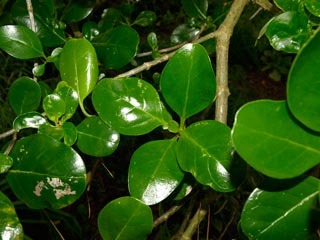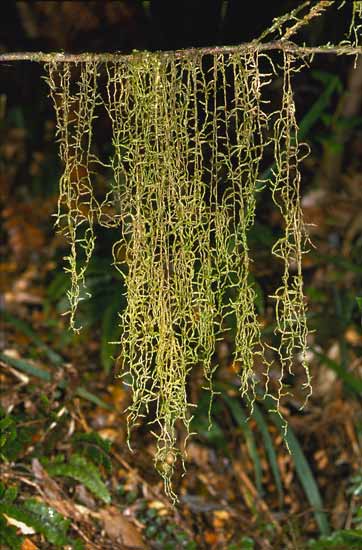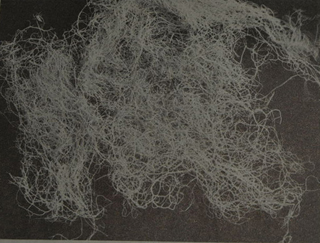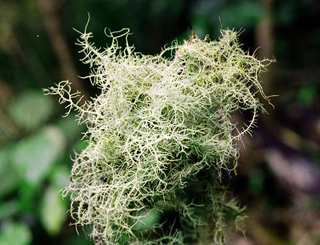This is a name shared by both Rarotongan and New Zealand Mäori, applied to a unique species of Coprosma in each language. In Aotearoa it is one of the names for almost indestructable taupata, Coprosma repens.
Somewhat mysteriously, in New Zealand the name is also applied to a variety of lichen, referred to in Williams' dictionary and some other reference works (e.g. Murdoch Riley's Herbal) as Usnea barbata. This was a nineteenth century shorthand for Usnea ("Aaron's beard") species in general -- U. barbata is an old-world species that is not found in New Zealand. These lichens (and similar ones of the genus Ramalina) along with mosses with similar properties were used for wrapping and as an absorbent.
According to William Martin & John Child, the various species of Usnea are notoriously difficult even for botanists to distinguish. Two commonly encountered, easy to reach species (U. capillacea and U. arida) which probably qualify as angiangi, are illustrated here. However, David Galloway has identified Usnea angulata and Ramalina meridionalis as the species most likely to have been used extensively as absorbants and nappies -- both are rich in the antibiotic usneic acid, are strong, soft and pliable and can be washed and reused. The late Irihapeti Ramsden informed him that "angiangi was associated mainly with "women's conditions such as menstruation, childbirth, and as nappies" - the sorts of things that men didn't speak much about, hence the ambiguity associated with the term."
The moss Lembopyllum divulsum seems also to have been known as angiangi. This moss can be mistaken for Weymouthia mollis, which 'forms soft, pale green to fawn veils hanging from branches and twigs in wet forest' (Beever et al, 1992, p. 182). This is a softer moss than Lembophyllum, and perhaps better suited to use as a diaper or napkin. It can be very abundant. [Jessica Beever, pers com. to S. Scheele, July 2001]
The Mäori name of the mosses and lichens is probably a reference to their fine texture (as in angiangi "fine (in texture), gentle (breeze)", and not a reflex of the earlier plant name *angiangi, which may belong only to the Coprosma species.
There is more information about Coprosma repens on the pages for naupata and mämangi. A link to the Bishop Museum's Cook Islands plant database for the Rarotongan angiangi is provided in the page for the Proto-Polynesian source word. (Links to all those pages are at the top of this one.)
![]()
 This work is licensed under a Creative Commons Attribution-Noncommercial 3.0 New Zealand License.
This work is licensed under a Creative Commons Attribution-Noncommercial 3.0 New Zealand License.



